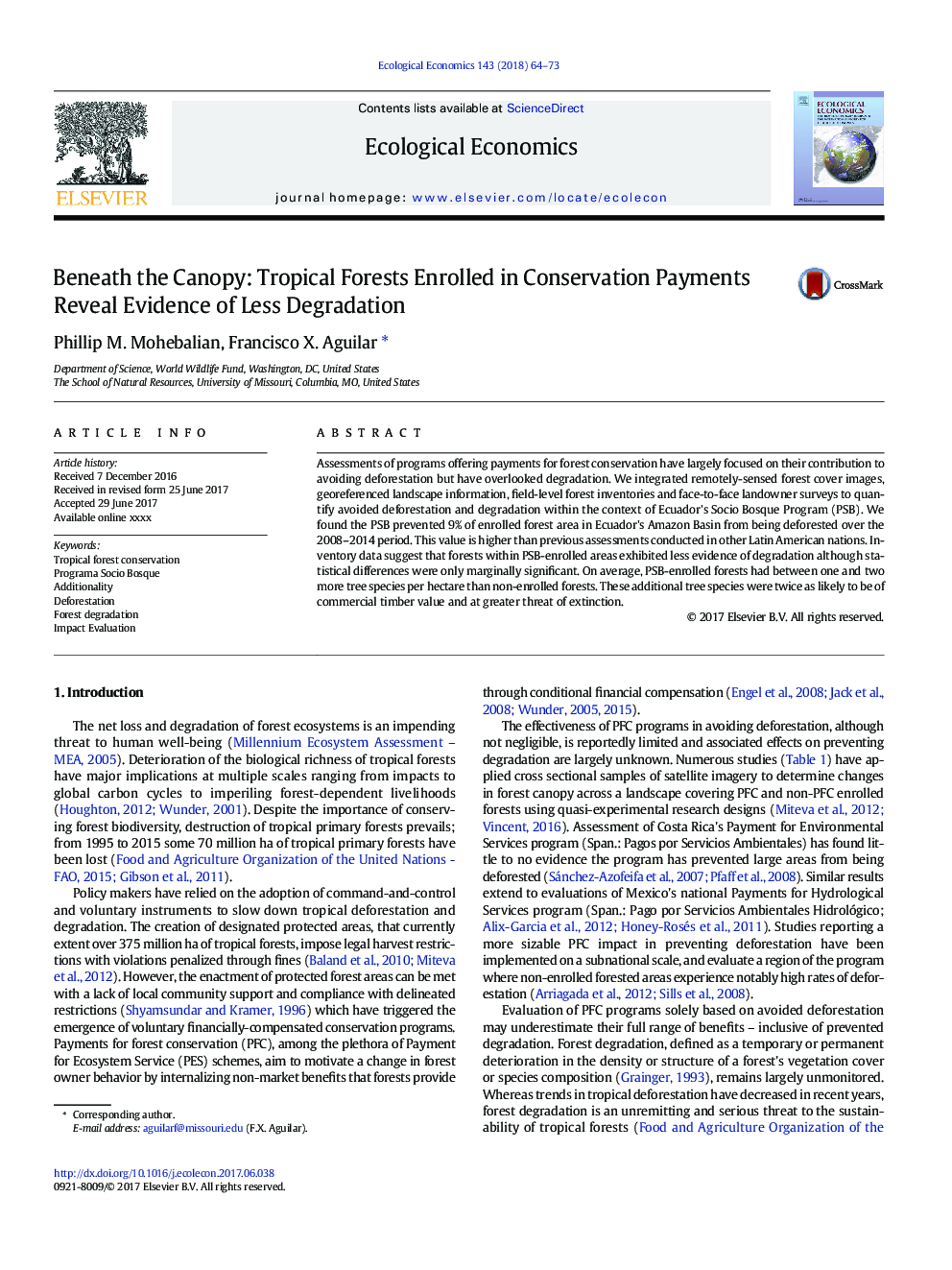| Article ID | Journal | Published Year | Pages | File Type |
|---|---|---|---|---|
| 5048565 | Ecological Economics | 2018 | 10 Pages |
â¢Georeferenced, biophysical and social information used to examine payment for forest conservation program's impact.â¢Over 2008-2014 Socio Bosque-enrolled forests were 9% less likely to have been deforested than non-enrolled forests.â¢Socio Bosque-enrolled forests had between one and two more tree species per hectare.â¢Socio Bosque-enrolled forests were twice as likely to have tree species of commercial timber value.â¢Socio Bosque-enrolled forests were 80% more likely to have tree species at risk of extinction.
Assessments of programs offering payments for forest conservation have largely focused on their contribution to avoiding deforestation but have overlooked degradation. We integrated remotely-sensed forest cover images, georeferenced landscape information, field-level forest inventories and face-to-face landowner surveys to quantify avoided deforestation and degradation within the context of Ecuador's Socio Bosque Program (PSB). We found the PSB prevented 9% of enrolled forest area in Ecuador's Amazon Basin from being deforested over the 2008-2014 period. This value is higher than previous assessments conducted in other Latin American nations. Inventory data suggest that forests within PSB-enrolled areas exhibited less evidence of degradation although statistical differences were only marginally significant. On average, PSB-enrolled forests had between one and two more tree species per hectare than non-enrolled forests. These additional tree species were twice as likely to be of commercial timber value and at greater threat of extinction.
